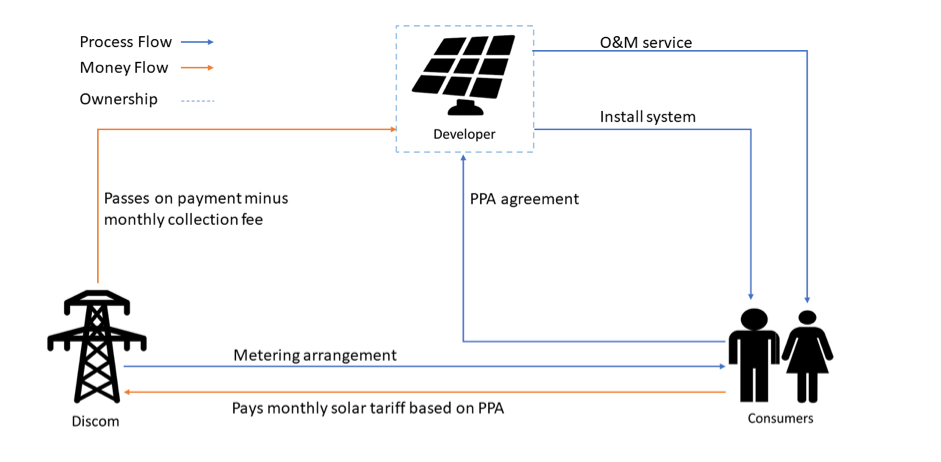Discom-led RESCO model is a version of the RESCO model in the residential sector where the discoms will undertake facilitation and payment collection.

Benefits to discoms
- Discoms could have an additional revenue stream with the collection fee charged for billing and payment collection.
Benefits to consumers
- Those consumers who cannot afford to pay the upfront cost can buy solar energy on a monthly basis and get the subsequent benefits.
- Aggregated procurement by the discom can ensure better quality of installation.
- Regular operations and maintenance undertaken by the developer ensures better performance of the system.
Benefits to developers
- Developers get access to new customer segments who could not afford rooftop solar system otherwise.
- Identification and aggregation of consumers by the discoms leads to reduced customer acquisition and business development costs for the developers.
- On-bill payment collection reduces the risk of payment default.
Source : Utility-centric Business Models for Rooftop Solar Models (USAID, 2008)
-
Target Consumer SegmentConsumers with exclusive roof access. Those consumers who cannot bear the upfront cost of solar system installation
-
LocationResidential building, office spaces and other buildings with exclusive roof access
-
Asset OwnershipThird-party
-
Metering ArrangementNet-metering
-
Role of DiscomPayment collection, facilitation
-
Level of involvement by utilityLow
-
Need for partnershipsLow
-
Revenue to DISCOMLow
-
Skill RequirementLow
-
Risk to UtilityMedium
